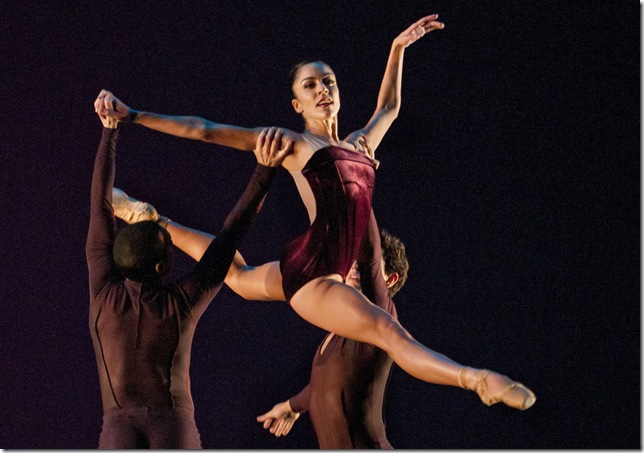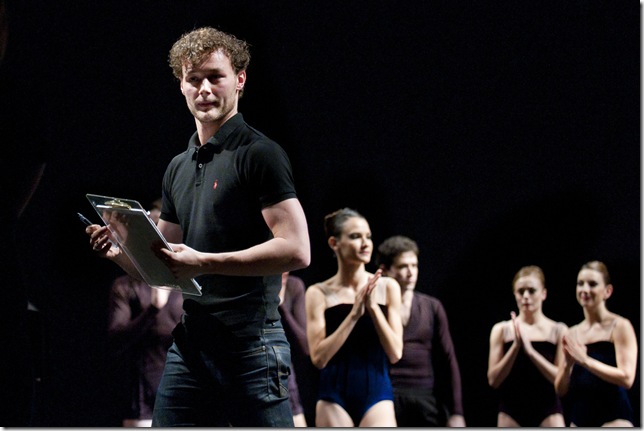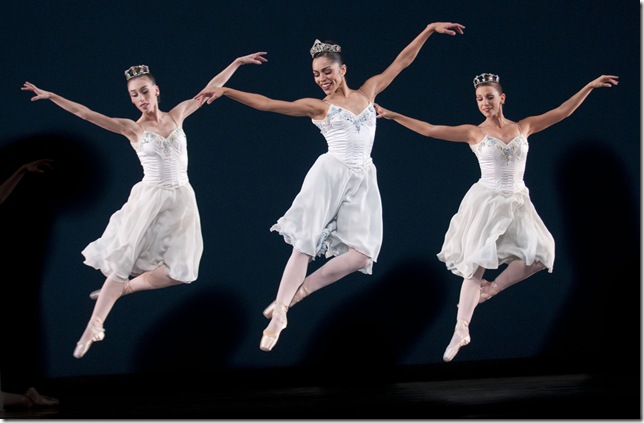Edward Villella is getting a tremendous sendoff as he eases out of his role as artistic director of the Miami City Ballet, the company he founded 26 years ago.
And the rest of us? We get to revel in his company’s brilliant success.
A packed house Saturday at the Kravis Center was treated to one of the world-premiere performances of Viscera, a piece created especially for the company by Liam Scarlett, a 25-year-old choreographing sensation from England’s Royal Ballet.
And what a great work it is. Villella, who commissioned it, may have discovered another Balanchine, Ashton or MacMillan.
Scarlett chose the First Piano Concerto of the contemporary American composer Lowell Liebermann for his music, and it’s an excellent choice. From the start, the dance captivates. What we see are beautiful, athletic bodies ready to dance. The women’s costumes were backless one-piece “swim” suits in hues of plum, red and navy. The men wore deep plum T-shirts and very short, tight-fitting boxer briefs of the same color.
The effect was to show off the lovely legs and backs of the women and the men’s muscular soccer-player thighs. Every costume was designed by the young choreographer for the look of fitness and ease of movement.
Viscera uses the dancers well. Its subtle changes in the makeup of each group are intriguing: first, two men, then three women, the corps, then a series of solos danced by the bubbly, energetic Jeanette Delgado. Scarlett’s work has all the elements of classical ballet with nods to the modernism what’s now known as the Rambert Dance Company and the like, and reflects what he himself called the “energy, passion, musicality and radiance’’ of Miami City Ballet.
It was the grouping of dancers that I found fresh and original. In many drills the corps de ballet dance with their backs to the audience, repeating flowing arm movements, exposing shoulder blades as they expand and contract. The drama is enhanced when they slowly face the audience. The dancers enjoyed every second of this piece, created especially for them.
The teaming of Delgado as Scarlett’s prima ballerina may have begun a fine pairing tradition; she performed his steps with exemplary technique. Pianist Francisco Renno and the orchestra, led by Gary Sheldon, were excellent.
After the Scarlett came Jerome Robbins’ In The Night. Three couples, the first pair dreamy and innocent; the second, more mature; the third, stormy and combative, enter and dance separately. At the end they waltz on to the stage together, meet and make friends. Using four Chopin nocturnes (night pieces), Robbins has created some clever choreography, with perhaps a few too many lifts. The overall feeling is clear insight into the lives of others through dance.
The first couple, Tricia Albertson and Didier Bramaz, was poetry in motion. The second couple, Cellie Manning and Isanusi Garcia-Rodriguez, was light as a feather, gliding along steadily. The third couple, Katia Carranza and Yann Trividic, was fun personified. Pianist Renno was again brilliant in his playing of the Chopin nocturnes.
Ballet Imperial, Balanchine’s tribute to Marius Petipa, father of classical ballet, ended the evening. Set to Tchaikovsky’s Second Piano Concerto, Renno and the 50-strong orchestra under Sheldon played beautifully once again.
This ballet recreates the time of Russia under the czars, when cities and even small townships had their own dance companies. It has no plot. The intricate line work of the corps de ballet takes shape in many different patterns, and combinations of patterns, that are the stamp and genius of the great Balanchine’s choreography.
Once more the delightful Jeanette Delgado, partnered by Reyneris Reyes, executed a most tricky pas de deux with skill and precision. She reminds one of the young Alicia Markova, bubbling over with the joy of life shown in her dancing. Reyes was the epitome of majesty; his solos were wonderful.
The trio of Tricia Albertson, Renan Cerdeiro and Didier Bramaz were the embodiment of sweetness and light. Albertson is so ethereal, reminding me of the late Merle Park in her quiet beauty. Costumes were white, white, white. And the dazzling tiaras, designed by Maria Morales — these are czarinas, not peasants — were magnificent, and even stayed in place.
The finale employs principals and the corps de ballet in an amazing display of leaps, interchanges, entrechats and line work. It dazzled and awed as you studied the total beauty of the ensemble on stage.
This was a memorable night of dance indeed, and Liam Scarlett is a great find.
Rex Hearn founded the Berkshire Opera Company and has covered classical music, dance and opera in South Florida since 1995.


